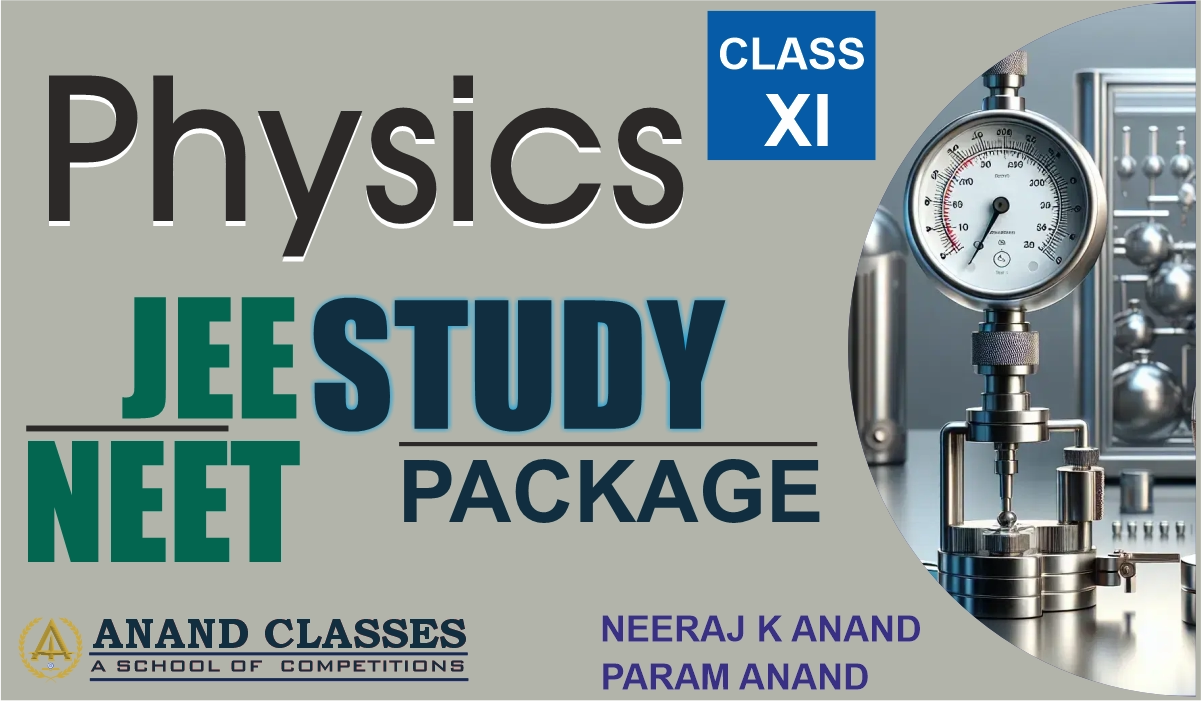Learn the dimensional formulas for various physical quantities, including derived SI units with special names. Explore how different quantities have the same dimensional formula and understand their significance in physics and engineering. Perfect for students and professionals looking to strengthen their knowledge of unit analysis and dimensional consistency
Derived SI units with Special Names
| Physical Quantity | SI Unit | Symbol |
| Frequency | hertz | Hz |
| Energy | joule | J |
| Force | newton | N |
| Power | watt | W |
| Pressure | pascal | Pa |
| Electric charge or quantity of electricity | coulomb | C |
| Electric potential difference and emf | volt | V |
| Electric resistance | ohm | \(\begin{array}{l}\Omega\end{array} \) |
| Electric conductance | siemen | S |
| Electric capacitance | farad | F |
| Magnetic flux | weber | Wb |
| Inductance | henry | H |
| Magnetic flux density | tesla | T |
| Illumination | lux | Lx |
| Luminous flux | lumen | Lm |
Dimensional Formulas for Important Physical Quantities
| Physical Quantity | Unit | Dimensional Formula |
| Acceleration or acceleration due to gravity | ms–2 | LT–2 |
| Angle (arc/radius) | rad | MoLoTo |
| Angular displacement | rad | MoloTo |
| Angular frequency (angular displacement/time) | rads–1 | T–1 |
| Angular impulse (torque x time) | Nms | ML2T–1 |
| Angular momentum (Iω) | kgm2s–1 | ML2T–1 |
| Angular velocity (angle/time) | rads–1 | T–1 |
| Area (length x breadth) | m2 | L2 |
| Boltzmann’s constant | JK–1 | ML2T–2θ–1 |
| Bulk modulus \(\begin{array}{l}\left(\Delta P.\frac{V}{\Delta V} \right)\end{array} \) | Nm–2, Pa | M1L–1T–2 |
| Calorific value | Jkg–1 | L2T–2 |
| Coefficient of linear or areal or volume expansion | oC–1 or K–1 | θ–1 |
| Coefficient of surface tension (force/length) | Nm–1 or Jm–2 | MT–2 |
| Coefficient of thermal conductivity | Wm–1K–1 | MLT–3θ–1 |
| Coefficient of viscosity \(\begin{array}{l}\left(F=\eta A\frac{dv}{dx} \right)\end{array} \) | poise | ML–1T–1 |
| Compressibility (1/bulk modulus) | Pa–1, m2N–2 | M–1LT2 |
| Density (mass/volume) | kgm–3 | ML–3 |
| Displacement, wavelength, focal length | m | L |
| Electric capacitance (charge/potential) | CV–1, farad | M–1L–2T4I2 |
| Electric conductance (1/resistance) | Ohm–1 or mho or siemen | M–1L–2T3I2 |
| Electric conductivity (1/resistivity) | siemen/metre or Sm–1 | M–1L–3T3I2 |
| Electric charge or quantity of electric charge (current x time) | coulomb | IT |
| Electric current | ampere | I |
| Electric dipole moment (charge x distance) | Cm | LTI |
| Electric field strength or intensity of electric field (force/charge) | NC–1, Vm–1 | MLT–3I–1 |
| Electric resistance \(\begin{array}{l}\left(\frac{potential\ difference}{current} \right)\end{array} \) | ohm | ML2T–3I–2 |
| Emf (or) electric potential (work/charge) | volt | ML2T–3I–1 |
| Energy (capacity to do work) | joule | ML2T–2 |
| Energy density \(\begin{array}{l}\left(\frac{energy}{volume} \right)\end{array} \) | Jm–3 | ML–1T–2 |
| Entropy \(\begin{array}{l}\left(\Delta S=\Delta Q/T \right)\end{array} \) | Jθ–1 | ML2T–2θ–1 |
| Force (mass x acceleration) | newton (N) | MLT–2 |
| Force constant or spring constant (force/extension) | Nm–1 | MT–2 |
| Frequency (1/period) | Hz | T–1 |
| Gravitational potential (work/mass) | Jkg–1 | L2T–2 |
| Heat (energy) | J or calorie | ML2T–2 |
| Illumination (Illuminance) | lux (lumen/metre2) | MT–3 |
| Impulse (force x time) | Ns or kgms–1 | MLT–1 |
| Inductance (L) \(\begin{array}{l}\left(energy =\frac{1}{2}L{{I}^{2}} \right)\end{array} \) or coefficient of self-induction | henry (H) | ML2T–2I–2 |
| Intensity of gravitational field (F/m) | Nkg–1 | L1T–2 |
| Intensity of magnetization (I) | Am–1 | L–1I |
| Joule’s constant or mechanical equivalent of heat | Jcal–1 | MoLoTo |
| Latent heat (Q = mL) | Jkg–1 | MoL2T–2 |
| Linear density (mass per unit length) | kgm–1 | ML–1 |
| Luminous flux | lumen or (Js–1) | ML2T–3 |
| Magnetic dipole moment | Am2 | L2I |
| Magnetic flux (magnetic induction x area) | weber (Wb) | ML2T–2I–1 |
| Magnetic induction (F = Bil) | NI–1m–1 or T | MT–2I–1 |
| Magnetic pole strength (unit: ampere–meter) | Am | LI |
| Modulus of elasticity (stress/strain) | Nm–2, Pa | ML–1T–2 |
| Moment of inertia (mass x radius2) | kgm2 | ML2 |
| Momentum (mass x velocity) | kgms–1 | MLT–1 |
| Permeability of free space \(\begin{array}{l}\left(\mu_o = \frac{4\pi Fd^{2}}{m_1m_2} \right)\end{array} \) | Hm–1 or NA–2 | MLT–2I–2 |
| Permittivity of free space \(\begin{array}{l}\left({{\varepsilon }_{o}}=\frac{{{Q}_{1}}{{Q}_{2}}}{4\pi F{{d}^{2}}} \right)\end{array} \) | Fm–1 or C2N–1m–2 | M–1L–3T4I2 |
| Planck’s constant (energy/frequency) | Js | ML2T–1 |
| Poisson’s ratio (lateral strain/longitudinal strain) | –– | MoLoTo |
| Power (work/time) | Js–1 or watt (W) | ML2T–3 |
| Pressure (force/area) | Nm–2 or Pa | ML–1T–2 |
| Pressure coefficient or volume coefficient | oC–1 or θ–1 | θ–1 |
| Pressure head | m | MoLTo |
| Radioactivity | disintegrations per second | MoLoT–1 |
| Ratio of specific heats | –– | MoLoTo |
| Refractive index | –– | MoLoTo |
| Resistivity or specific resistance | \(\begin{array}{l}\Omega\end{array} \) –m | ML3T–3I–2 |
| Specific conductance or conductivity (1/specific resistance) | siemen/metre or Sm–1 | M–1L–3T3I2 |
| Specific entropy (1/entropy) | KJ–1 | M–1L–2T2θ |
| Specific gravity (density of the substance/density of water) | –– | MoLoTo |
| Specific heat (Q = mst) | Jkg–1θ–1 | MoL2T–2θ–1 |
| Specific volume (1/density) | m3kg–1 | M–1L3 |
| Speed (distance/time) | ms–1 | LT–1 |
| Stefan’s constant \(\begin{array}{l}\left( \frac{heat\ energy}{area\ x\ time\ x\ temperatur{{e}^{4}}} \right)\end{array} \) . | Wm–2θ–4 | MLoT–3θ–4 |
| Strain (change in dimension/original dimension) | –– | MoLoTo |
| Stress (restoring force/area) | Nm–2 or Pa | ML–1T–2 |
| Surface energy density (energy/area) | Jm–2 | MT–2 |
| Temperature | oC or θ | MoLoToθ |
| Temperature gradient \(\begin{array}{l}\left(\frac{change\text{ in temperature}}{\text{distance}} \right)\end{array} \) | oCm–1 or θm–1 | MoL–1Toθ |
| Thermal capacity (mass x specific heat) | Jθ–1 | ML2T–2θ–1 |
| Time period | second | T |
| Torque or moment of force (force x distance) | Nm | ML2T–2 |
| Universal gas constant (work/temperature) | Jmol–1θ–1 | ML2T–2θ–1 |
| Universal gravitational constant \(\begin{array}{l}\left(F = G.\frac{{{m}_{1}}{{m}_{2}}}{{{d}^{2}}} \right)\end{array} \) | Nm2kg–2 | M–1L3T–2 |
| Velocity (displacement/time) | ms–1 | LT–1 |
| Velocity gradient (dv/dx) | s–1 | T–1 |
| Volume (length x breadth x height) | m3 | L3 |
| Water equivalent | kg | MLoTo |
| Work (force x displacement) | J | ML2T–2 |
📌 Related Posts:
Speed(Velocity)-Time Graphs Cases, Area Under Speed-Time Curve Gives Distance Travel
|
Body Thrown Vertically from a Height: Equations of Motion | JEE/NEET/CBSE Class 11
|
Triangle Law of Vector Addition-Formula And Derivation-Class 11 Physics Notes
|
SI (Metric) Prefixes Class 11 CBSE-Questions, Answers, MCQs, FAQs & Worksheet
|
Units and Measurements Question Paper Class 11 Physics CBSE Board Exam
Quantities Having the Same Dimensional Formula
- Impulse and momentum.
- Work, torque, the moment of force, energy.
- Angular momentum, Planck’s constant, rotational impulse.
- Stress, pressure, modulus of elasticity, energy density.
- Force constant, surface tension, surface energy.
- Angular velocity, frequency, velocity gradient.
- Gravitational potential, latent heat.
- Thermal capacity, entropy, universal gas constant and Boltzmann’s constant.
- Force, thrust.
- Power, luminous flux.



